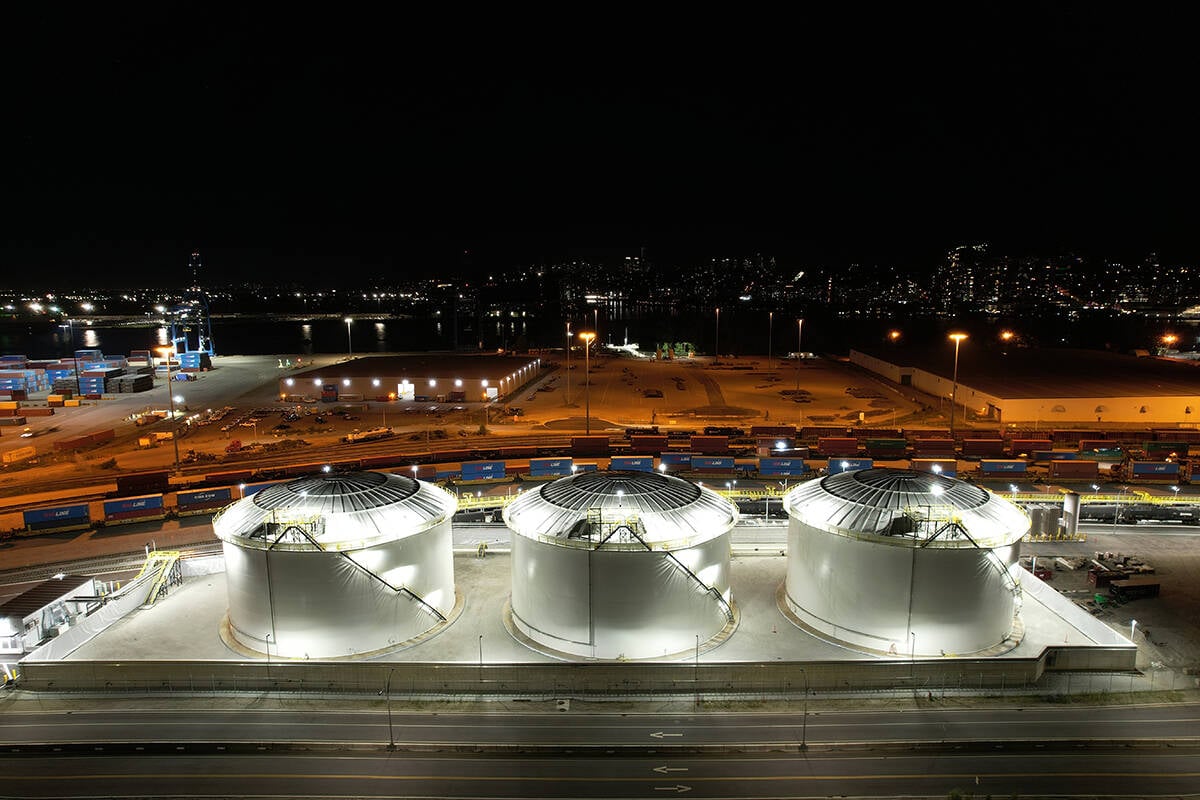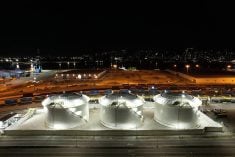Allegations of missed marketing opportunities.
Complaints about low prices.
Comparisons between monopoly control and marketing freedom.
If this sounds like another instalment of the
debate over the Canadian Wheat Board’s future, look again. This time, it is the Canadian hog
industry which is immersed in a debate about the future of marketing boards.
While the rhetoric sounds familiar, the comparison has its limits.
In the hog industry, it is a debate about domestic investment rather than foreign markets. And in the hog
Read Also

Canola oil transloading facility opens
DP World just opened its new canola oil transload facility at the Port of Vancouver. It can ship one million tonnes of the commodity per year.
industry, it is more than debate. Manitoba ends its provincial hog board monopoly next week and Alberta is considering similar action.
In this special report, Camrose, Alta.-based correspondent Mary MacArthur examines the debate over the future of hog marketing and how some producers are responding.
Producers seek alternative marketing methods
Klaus Reimer sees the possible end to the province’s hog marketing monopoly as an opportunity to redesign his business plan.
Over the past few years under the marketing board, the Crossfield, Alta. farmer has had a steady income from hogs.
Now, with his lumber business expanding and hog marketing arrangements in doubt, the southern Alberta farmer doesn’t want to spend more time in his small hog barn for the same income.
Reimer and several other small hog producers are looking at establishing “production loops” in reaction to the possibility of an open market.
Loops are a fancy way of saying farmers get together to produce and sell their hogs co-operatively.
“We’ll be able to create the same advantage as the bigger players,” said Reimer.
While nothing has been settled, farmers in the group are looking at remodeling their barns to create three specialties. One producer may concentrate on farrowing, another may raise weanling pigs in a segregated weaning barn and another would finish the hogs.
By pooling their resources, the farmers hope they’ll be able to produce a uniform product and demand the same prices as large-scale producers when negotiating with the packing plants in a dual market system.
The idea for the loop came from Co-op Feeds feed sales representatives Dennis Lonsdale and Mike Lucas. The pair could see their traditional family farm markets disappearing.
Seeing farmers as an independent lot, they figured small producers would slowly go out of business rather than join forces, said Lonsdale of Calgary.
The pair organized a series of meetings and was surprised by the enthusiasm.
“There’s lots of interest out there,” said Lonsdale. “It’s a tool to survive in the open market.”
Some Ontario producers have been using the same tool for about a year, said Janice Murphy, swine adviser with the Ontario Ministry of Agriculture.
Farmers were first attracted to the idea of segregated early weaning. Separating the piglets from the sow early reduces the risk of disease.
It also became a way for producers to specialize and expand, she said.
“Some producers switched to farrowing, others were just happy to feed pigs,” said Murphy of Fergus, Ont.
While the jury is still out on the first year’s result, Murphy thinks most of the producers are happy with the changes.
At first, there was a fear the feed companies or one producer in the loop could get too much power, but that hasn’t happened, said Gary Koebel, swine market and product specialist with Ontario’s agriculture department, near London.
“People are beginning to realize producers with 150 sows can flow into the loop. They’re gaining some stability with it.”
















